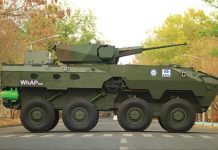Morocco is rapidly shifting gears in the electric vehicle race, with 2025 shaping up to be a pivotal year. Electric car sales in the country are projected to soar by 80%, with an additional 36% boost expected in 2026, according to forecasts from BMI-Fitch Solutions. This explosive growth is part of a larger trajectory that could see annual EV sales climb to 57,000 units by 2034, driven by a decade-long average growth rate of 36%.
This momentum is powered by a mix of strategic moves, starting with the expansion of local manufacturing. Neo Motors made headlines in October 2025 by unveiling the Dial-E—the first fully electric vehicle to be designed, engineered, and assembled entirely in Morocco. Mass production is set to begin in January. Meanwhile, Renault has doubled down on its presence in the country, launching a new production line exclusively for EVs, alongside a research and development center and upgrades to its existing facilities.
Morocco’s industrial ecosystem is rising to meet the moment. At Jorf Lasfar, the Moroccan-Chinese joint venture COBCO is already producing components for lithium-ion batteries. Chinese giant Tinci has invested 2.6 billion dirhams in an electrolyte factory, while Gotion High Tech, active in the country since 2023, has committed $1.3 billion to build two new gigafactories. Other major players in the battery supply chain—including BTR New Material Group and Guangdong Haomei—are also reinforcing the sector’s foundations.
The commercial side of the market tells an equally compelling story. In 2024, sales of fully electric cars surged by 143%, while plug-in hybrids jumped an astonishing 224%. Tesla entered the Moroccan market in June 2025, rolling out a Supercharger network and preparing to open a local assembly plant in Kénitra. Chinese brands continue to consolidate their foothold—BYD leads the plug-in hybrid segment, and Zeekr launched two new models this year.
Backing this transformation is a robust government strategy aimed at making EV adoption more appealing. Incentives include value-added tax exemptions, purchase subsidies, reduced import duties, and tax breaks. Thanks to these measures, Morocco’s electric passenger vehicle fleet is expected to hit 18,000 units by 2026 and nearly 237,000 by 2034, according to BMI estimates.
One challenge remains: expanding the charging infrastructure. By the end of 2024, Morocco had around 1,000 public charging points. However, a push to produce chargers locally starting in 2026 is expected to relieve supply chain pressure and support the country’s rapidly growing EV fleet.
Step by step, Morocco is positioning itself not just as a leader in electric mobility on the African continent, but as a global player in the transition toward cleaner transportation.





